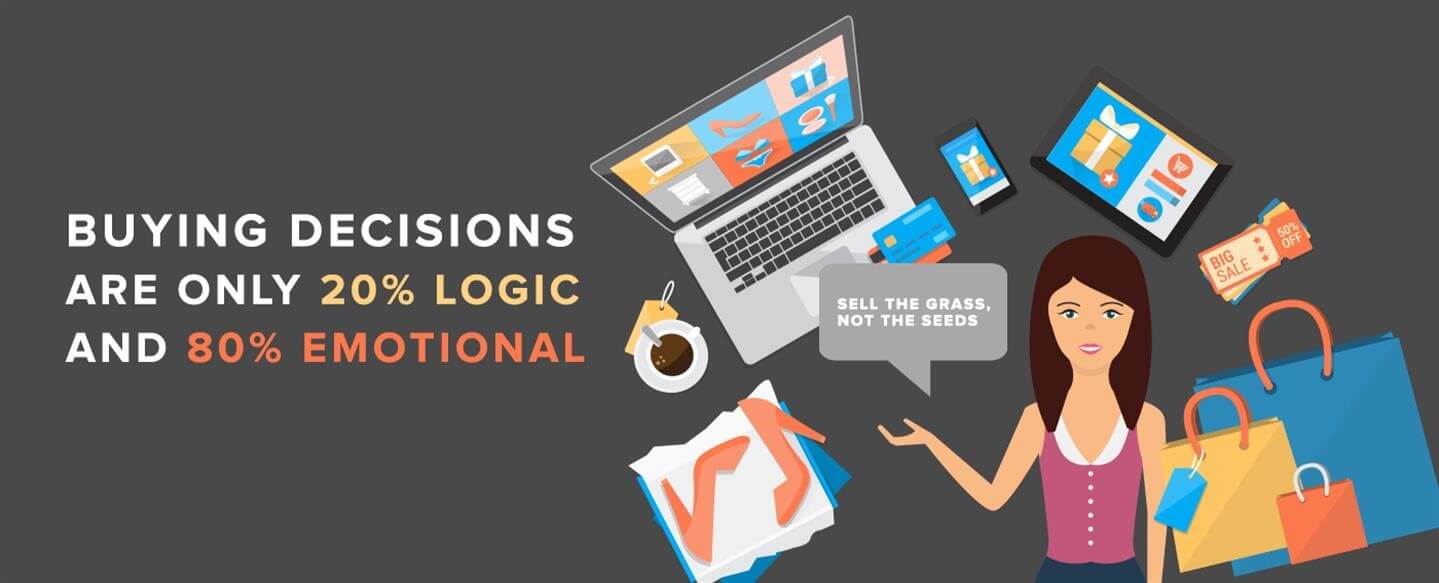Buying decision: 20% logic - 80% emotional.

Buying decisions are based on 80% emotion and 20% logic: here’s how to incorporate that into your copywriting and marketing.
Imagine that you’ve just come into some money, and you can finally replace your old banger of a car with something a little more modern... and possibly a little faster. Who knows, you may even end up with some wheels that turn heads!
Stop a minute – what’s all this about head-turning? Cars are about getting you from A to B... so what’s all this stuff about head-turning? Shouldn’t we be studying fuel economy charts, crash data and safety testing websites?
Yes, you may well research all that information on some sensible websites... but chances are you’ve already got a brand, model and colour of car in your mind. Correct? These things all relate to emotion. Different brands have different emotional links: some car makes are perceived to be practical; others are perceive to be upmarket; others are perceive to be sexy, and so on...
Similarly, different colours have different psychological links too. Even someone who doesn’t give a hoot about cars will still have some very firm likes and dislikes. For example, they may prefer a Toyota to a Porsche; or a neutral-coloured car to a bright coloured car.
Before you even walk into the car showroom, you’ve already got some ideas and preferences. Those preferences will be linked to a reasonable degree on how you’ll look and feel in your future new car. That’s all linked to emotions.
Drawing on emotions is vital in your website copywriting, about 80% of buying decisions are based on emotion; and only 20% are based on logic. So if you want your marketing piece to be effective, it’s absolutely imperative that you drill into those emotions.
If you just go into the facts, that’s boring. Yes, the car’s engine might have special features – but will it make the driver smile when it goes VROOOOM? Yes, the car has special brakes – but will it keep my family safe? Yes, there may be dirt-resistant paint – but isn’t that about leaving the customer more time to do fun stuff?
Look at that last sentence again. What we’ve done here is to separate the products practical features from the emotional benefits. This is the really interesting thing In the showroom, we choose the shiny red car because we think it looks cool, and it has a nice state-of-the-art stereo with bass tones that gives you goose bumps. But when you get the car home, you’ll start justifying your purchase to your other half with logic. We’ll say stuff like: “Ah, yes, this car has a special eco-engine and only uses 2 drops of fuel to drive a hundred miles, plus look at these seatbelts! They’re meant to be the best on the market – it’s what our kids deserve!”.
Your marketing piece shouldn’t be all about emotion – even though that’s the attention-grabber. At some point, you do need to provide your prospect with some factual data so they can then justify their head-turning vroooom machine when they get home.
Our eCommerce Websites have powerful features that can be found externally, like email marketing capabilities. Some of these services are pretty good and are often free (to a point). What makes our eCommerce Websites different is...
"our eCommerce Websites have 5+ systems all in one place - so you have everything at your fingertips. No more trying to remember numerous logins for systems that don't talk to each other - which means you can get things done faster and have more time to do spend your money your website is earning you..."
As we say in the industry "sell the grass, not the seeds", or "sell the sizzle, not the sausage".



